The transformation of the American upper class
One of our least noticed revolutions, and why it is at the root of many of today's problems.
Make someone’s day: Gift a subscription to your friends and family!
Class is something that Americans do not like to talk about. Most people regard themselves and other people they know as “middle class,” even when they are obviously not. In particular, Americans are uncomfortable talking about the upper class or being labeled as a member of it.
While I do not uphold a Marxist class determinism, I do think that class is a very useful concept. In a previous article, I outlined how I think it is best to understand class in American society.
To sum up, I believe that class is best defined by four criteria:
Age
Education (particularly those with a four-year college degree and those that do not)
Work status (whether a full-time worker is in the household)
Marital status
When I break down American households based on these critical characteristics, I get something that looks like this. In this article, I want to talk about what I call the “Professional class,” which is the de facto upper class in American society. But first I want to explain what came before the Professional class: the White Anglo-Saxon Protestant upper class.
If you enjoy this article, you should read my From Poverty to Progress book series:
From the American Revolution until the 1960s, American political, economic, religious, military, and social institutions were dominated by a relatively homogeneous WASP upper class. The leaders of these institutions consisted overwhelmingly of:
Males
Northerners and, after the Civil war, Midwesterners
Of British, Dutch or German descent
Worshiping in Mainline Protestant churches, particularly the Presbyterian, Episcopalian, and Congregationalist churches
Very patriotic
Believing in material progress
Republican in partisan identification
Conservative in ideology (although it was a very different type of conservatism than today).
Were invariably married, and typically had a large number of children.
Many, though certainly not all, had a strong sense of humility that they were lucky enough to be born into privilege, and this gave them a moral obligation to work for the betterment of God and Country.
To be clear, the vast majority of Anglo-German Protestants were farmers, tradesmen and unskilled laborers. The WASP upper class was a subset of this ethno-religious group. As I argue in another article, the USA before World War II was far more stratified by ethnicity, religion, race, and region than by class.
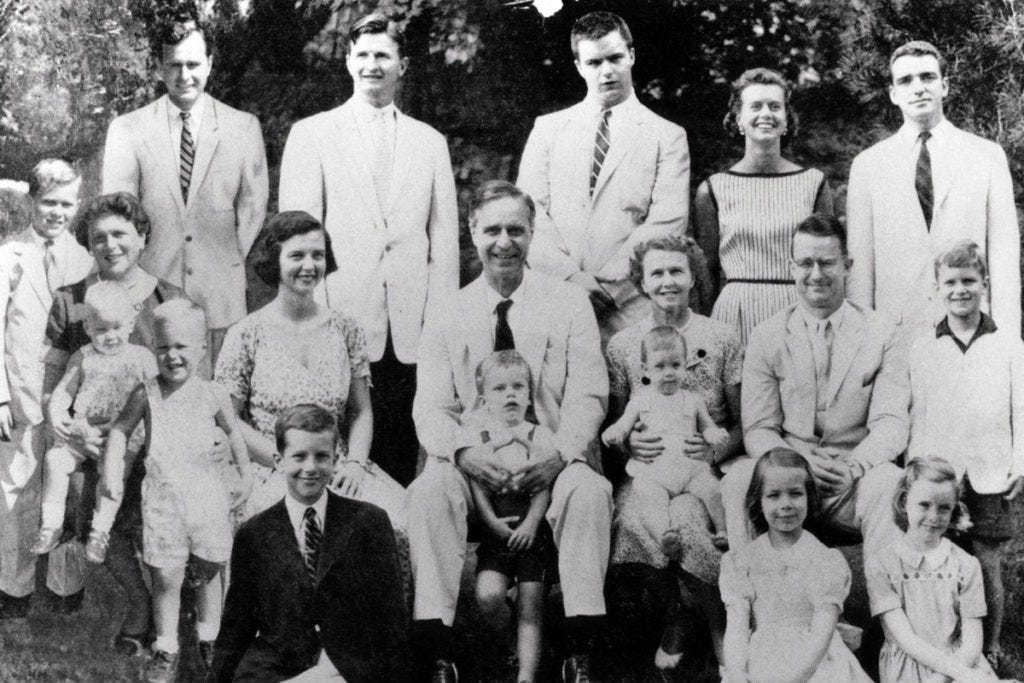
Members of this class distinguished themselves from non-elites by their dress, hairstyle, accents, mannerisms, hobbies, knowledge of the Classics, and material possessions. Many of these social markers were copies of the social markers of the British gentry and aristocracy.
On the outside for almost all of this period were:
Women, though spouses and daughters born into the upper class could play important roles, particularly in charitable organizations and informal social gatherings.
Irish and other Catholics
Jews
White Southerners (at least after the Civil War)
Blacks
Often called the “WASP elite” (White Anglo-Saxon Protestant), these elites were highly concentrated in a few large cities, such as New York City, Philadelphia, Boston, and Chicago. Below this elite were lesser members of the same class who lived in smaller cities and even small towns. Except in the South, this WASP elite dominated the upper rungs of the social ladder everywhere.
This upper class was truly a class. They intermarried, socialized exclusively amongst themselves, lived in the same neighborhoods, and, most importantly, dominated virtually all economic, political, military, and social institutions.
The WASP elite lived in highly class-segregated neighborhoods, such as Beacon Hill in Boston, the Upper East Side in New York City, Main Line in Philadelphia, Grosse Point in Detroit, Barrington in Chicago, Georgetown in Washington DC, and later Nob Hill in San Francisco. Many of them summered in Newport, Rhode Island and wintered in West Palm Beach, Florida.
Back then, which family you came from, was very important to whether you were accepted into the class. Just listing the most famous families shows their enormous impact on American history: Adams, Hearsts, Tafts, Vanderbilts, Astors, Bushes, Roosevelts, Forbes, Carnegies, Fords, Van Rensselaer, Mellons, Rockefellers, Du Ponts, Whitneys, Morgans, Cabots, Lodges, Lowells, and Goulds. Each of these families was typically founded by a great entrepreneur or politician, but they increased their fame from their contributions in later generations.
While talented members of the excluded groups could join this upper class, they could only do so by copying WASP social norms. Only after years of acting like “one of us” could very accomplished outsiders be accepted somewhat as “one of us.” Usually, this meant marrying within the class, educating your children to copy the WASP social mores, and then your children would be fully accepted within the group.
A few major institutions were not dominated by this upper class: mainly the Democratic party, the Catholic church, and trade unions. In fact, for much of its history, the Democratic party was a grand coalition of “outsiders” who did not belong in the WASP upper class. Despite this, many of the leaders of the Democratic party were members of this class.
While such a homogenous group is hard for 21st-century Americans to understand, the WASP upper class was remarkably successful at running the nation. Indeed, without the leadership of this group, much of American economic, political, cultural, and military success would not have been possible.
This WASP upper class acknowledged their born privileges, while also believing that they had to use their power for good. Their value system was molded by Protestant religion and patriotism. Though they always expected to lead, they also accepted that they needed to sacrifice for a greater good, whether it be God, Community, or Nation. Above all, the WASP upper class believed in Self-Restraint.
The Transformation
Starting in the post-WWII era but accelerating greatly in the late 1960s when the Baby Boomers started coming of age, this upper class went through transformational changes:
Four-year universities, particularly elite private universities, became the de facto gatekeepers of who could enter this class. University admission tends to sort for intelligence (though not as much as I would like).
Membership in the class by women, Southerners, Catholics, Jews, Blacks, and Hispanics radically expanded, so that now male, church-going Protestant Anglo/Germans are only a small minority within the group.
The upper class expanded dramatically in number. I have found no comprehensive studies of the size of the WASP upper class, but it was certainly less than 5% of the population and probably closer to 1%. Now approximately, 30% of Americans have a four-year college degree.
Entrance into and ability to move up within the new class is largely based on merit, although this is being seriously being undermined by DEI policies.
If a person has a four-year college degree, acquires the necessary skills for their occupation, lives in a metro area with job opportunities, gets along well with co-workers, and works hard for decades, they can do very well. A small percentage will move to the top of their chosen profession.The class has nationalized and expanded geographically to include all major metros, but particularly to the West Coast. Previously, the WASP elite was far more decentralized.
The class got far more wealthy than ever, largely due to new technologies that earlier generations could not have dreamed of. The material standard of living of a typical 40-year-old college graduate today dwarfs what the top 1% once had.
Mainline Protestant religion has been replaced by secularism or vague spiritualism.
Patriotism has been replaced by cosmopolitanism, and often downright anti-patriotism.
A self-confident belief in progress has been replaced by a post-modern skepticism of or even opposition to progress.
Partisan identification has shifted from Republican to Democratic, particularly in the large metro areas in the Northeast and Pacific coast.
Ideology has shifted from conservatism to varying degrees of Left-of-Center ideology. The percentage who are very Left-of-Center has increased dramatically, particularly since 2010.
Are often single or divorced, and even when married, typically have at most one or two children. An increasing percentage are childless.
Combined together, and particularly in comparison to its relative stability over the preceding two centuries, this was a revolutionary transformation. The importance of this change cannot be underestimated, but this transformation has received very little notice.
What has not changed, however, is the degree to which this upper class controls our political, economic, and cultural institutions. Virtually all members of the leadership and middle management of our institutions belong to this new upper class. And even the lower ranks of many institutions are filled with younger members of the upper class.
A transformation in values and ideology
All of the above matters, but I want to focus particularly on the shift of values of the American upper class. I believe the shift from:
A) A value system defined by Mainline Protestantism, patriotism, and a self-confident confidence in progress, to:
B) A value system defined by secularism, cosmopolitanism that sometimes flirts with anti-patriotism, and a post-modern skepticism of progress is particularly stunning.
Given how influential the upper class is on American political, economic, and social institutions, it is hard to overestimate the consequences of this transformation.
And ideological polarization
Some people have bemoaned the increasing polarization of American politics, but few have remarked on how much this polarization is largely within the white, college-educated professional class. While most of America hovers near the ideological middle, white college-educated voters tend towards the extremes.
While White college-educated Republicans being conservative is much in keeping with American history, the fact that there is now an even larger group of very liberal White college-educated Democrats is unprecedented. And it contrasts greatly with Blacks, Hispanics and Asians.
The influence of these very liberal White college-educated Democrat is particularly important in the following institutions:
Universities
K-12 education
Media
Hollywood and the entertainment industry
Digital technology industry
Democratic party
Federal bureaucracy and state/local bureaucracies in Blue states.
The value system of those in these industries is now radically different from the value system that once dominated. This is most overtly expressed in campaign donations to the Democratic and Republican parties by occupation:
Journalism is not a typical occupation, but the changes in this graph show the massive changes in partisan identification over the last 50 years.
The trend among journalists is matched (although with less intensity) among professionals in other occupations.
The shift has been particularly pronounced among whites. There has been a clear drift of White Democrats (which is the core base of the new upper class) to the Left, while White Republicans, Blacks, and Hispanics have been fairly stable in their ideological views:
This is not just seen in ideology, but also in voting patterns. While lower-income and lower-education voters have moved toward the Right since 1996, the higher-income and higher-education voters have moved toward the Left. A similar trend has happened in most wealthy Western nations.
Whether you think this transformation is good or bad is likely primarily based on your own ideological views, but it is hard to not come to the conclusion that this has been a transformation of the American upper class.
How new world views evolve
I believe that all ideologies are based on non-rational assumptions that stem from psychological temperament. But ideology is not exclusively non-rational. A person’s chosen ideology must also be plausible to:
the rational part of their brain
Their culture and social network
Note here that I say “plausible” instead of “true.” The non-rational part of our brain just needs to persuade the rational part not to object too much to any discrepancies between the ideology and observations of material reality.
That ideology must also project an image that a person wants to project to others. Individuals try to “rationalize” their ideological preferences to others. By this, I mean that individuals try to construct rational reasons for their beliefs even though that is not actually how a person acquired those beliefs. This rationalization is more Public Relations designed to persuade others rather than the actual reason why the individual chose that ideology.
People like to associate with others who have similar identities, so there is a strong social element as well. This also tends to reinforce their ideological choice. Many people do not like to associate with others who can make logical arguments as to why their ideology is incorrect. Over time, that ideology becomes part of their moral identity, so it is very hard to change.
Just like the old WASP elite distinguished themselves from non-elites by their dress, hairstyle, accents, mannerisms, hobbies, knowledge of the Classics, and material possessions, so did the Left-of-Center upper class. While the Right-of-Center upper class tends to stick with older social markers or accept those of the working class, social markers of the Left-of-Center upper class are very clear about signaling class status.
Virtually every fashion trend among college-educated youths seem almost crafted to shout “I am not working class.” And as each generation of Left-of-Center upper class grows into maturity, these youthful fashion trends get adopted into the larger upper class, although usually in toned down versions. Over time, the social markers of the Left became accepted as normal within the upper class in the Northeast and Pacific coast.
Left-of-Center ideology is now linked to high social status
With each decade, Left-of-Center views increased as a percentage of the overall American upper class. This is particularly true within the up-scale neighborhoods of major metropolitan areas of the Northeast and Pacific coast. At some point around the year 2010, this trend hit a tipping point where Left-of-Center ideology became associated with high status, education and intelligence.
At the same time, social media and mobile phones came into widespread usage. This enabled the entire nation of Left-of-Center members of the upper class to communicate with each other in real time. Liking, reposting and algorithms designed to increase engagement created a digital hivemind.
This created an information cascade where most members of the upper class stampeded to compete against each other to see who could be most Left-of-Center. And swarm-attacking non-believers online was a keys means to do that.
By publically, adopting Left-of-Center policy stands in the digital world or the material world, a person says:
I am highly educated
I am intelligent
I care more than other people do
I am a deserving member of the upper class
This is in stark contrast to the previous WASP upper class’ sense of humility that they were lucky enough to be born into privilege, and this gave them a moral obligation to work for the betterment of God and Country. Increasingly among the new upper class, “privilege” is what other people have and it is a source of shame, not a moral obligation to help others.
And notice how easy this is. A person does not have to go to church, help the poor or racial minorities in any way, or take any physical action. It is status and virtue on the cheap. So more and more people wanted to join the party. But as soon as specific policy stand was adopted by too many people, it was no longer an effective signalling device. So to keep up the image, they were forced to constantly identify and signal their support for the “latest issue.”
Some have called this “virtue signaling ,” but it is actually zero-sum status-based competition where a willingness to publicly signal their commitment to the “latest big issue” is the means to measure virtue. Virtue signaling alone is not enough to create the hive mind. It was the constant zero-sum competition over who is the most virtuous that is the real key. That is why the Left has driven itself to adopt issue stands that they themselves would have though foolish just 15 years ago.
The result was the Great Awokening, which started around 2010 and culminated in Covid/BLM crisis of 2020. While I do not believe that all this automatically led to the Great Awokening, I do believe that it was a key enabling factor of the Rebirth of the Totalitarian Left in the 21st Century.
A dysfunctional worldview
Just like almost all radical ideologies that came before it, Woke Critical theory is at its core a Celebration of Cluster B personality disorders. But personality disorders have always been with us. Someone had to invite those personality disorders into our instititutions.
Without the Center-Left dominance of many American institutions by 2010, the Woke would have had no access to power. While the Woke may have demanded access to American institutions via hiring, firing, and promotions policies based on Diversity, Equity, and Inclusion, it was the Center-Left who invited them in. Without the passive (and sometimes active support of the Center-Left, the Woke would be powerless. In effect, the Center-Left treats the Woke as just another addition to the coalition against conservatives and Republicans.
The old WASP elite before World War II would have shooed-away the Woke with the back of their hand. So while commentators focus on the actions of the Woke, it was the actions of the leaders of our institutions that mattered most.
I believe that the single most important trend for the American nation over the last 60 years is that a very large portion of the American upper class has adopted Left-of-Center ideologies that:
Implements public policies that undermine material progress.
Preaches values that are very different from their revealed preferences on work, marriage, etc. This undermines the ability of the lower classes to copy the successful.
Valorizes, or at least tolerates, self-destructive behavior that undermines traditional attitudes that promoted Upward Mobility for the working class and poor.
Valorizes, or at least tolerates, anti-social behavior, such as confrontational and even violent behavior. Most of all, it valorizes abusing power to forward one’s own ideological views at the expense of the rest of the nation.
Undermines the moral legitimacy of parents, peer pressure, and law enforcement to deal with self-destructive and anti-social behaviors.
While the old WASP elite valorized Self-restraint, much of the new upper class celebrates “Do Your Own Thing” (as long as it does not conflict with Left-of-Center ideology). Now our leaders are more concerned with managing public perception rather than solving problems. And if anyone objects, their underlings are branded “populist,” “racist,” “misogynist,” “fascist,” or “far right.”
This focus on managing perceptions and promoting those without merit via DEI has made our institutions increasingly dysfunctional. This worldview is pushing the nation toward Soft Totalitarianism.
So was this a good transformation?
Despite the great dangers that I see in the changing world views of the American upper class, I think this transformation was a good and necessary one. For a nation as large as the United States, it would have been impossible to maintain an upper class so narrowly based on gender, ethnicity, religion, race, and region. The old system kept an enormous number of very talented Americans from making a full contribution for themselves, their family, and their nation.
And given how much was at stake, it is quite remarkable that the old WASP elite gave up its virtual monopoly with virtually no violence. If our new upper class maintained its old views on religion, patriotism, and progress, I would regard this as an entirely positive transformation.
The ideological transformation of the American upper class is also quite astounding. Except in Communist regimes, the upper class has been almost monolithically Right-of-Center in virtually every nation in world history.
And this transformation is not restricted to the United States. All across the Western world, college-educated voters have swung to the left, while working-class voters have swung to the right (largely, I believe, in reaction to the first trend).
The rise of a Left-of-Center upper class in a non-Communist society, particularly one as non-Socialist, as the United States was for its first 200 years, is unprecedented.
If you enjoy this article, you should read my From Poverty to Progress book series:

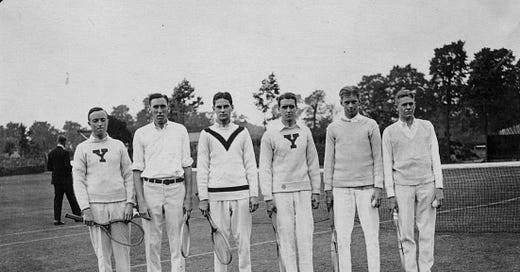






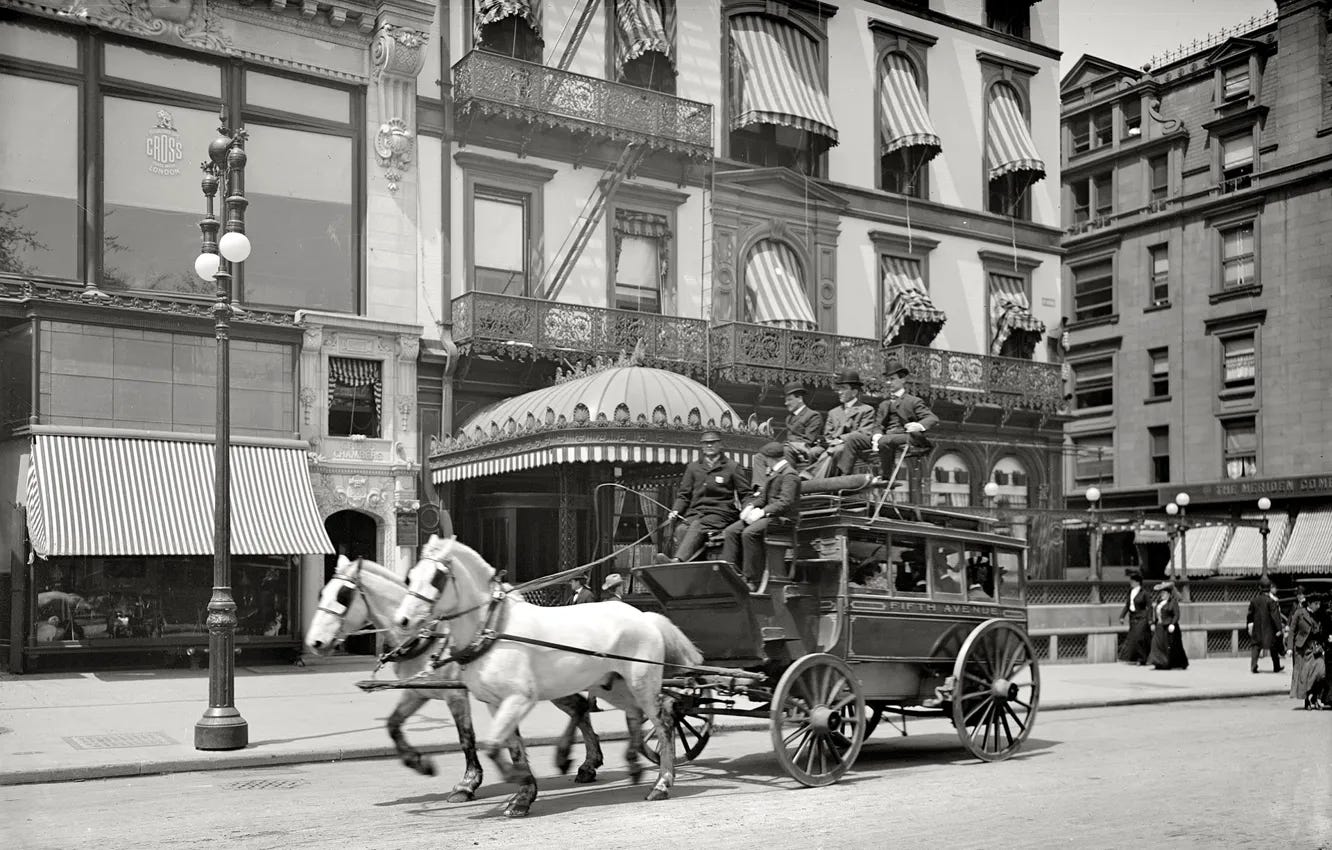

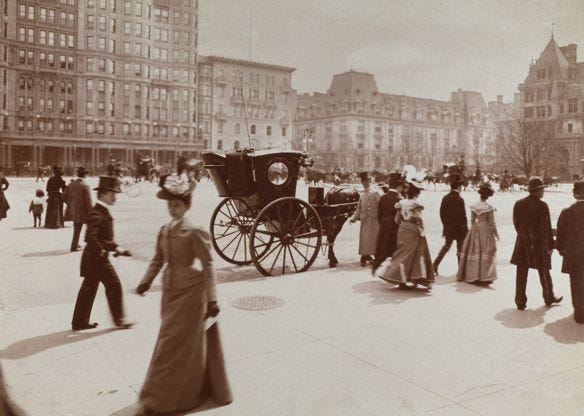
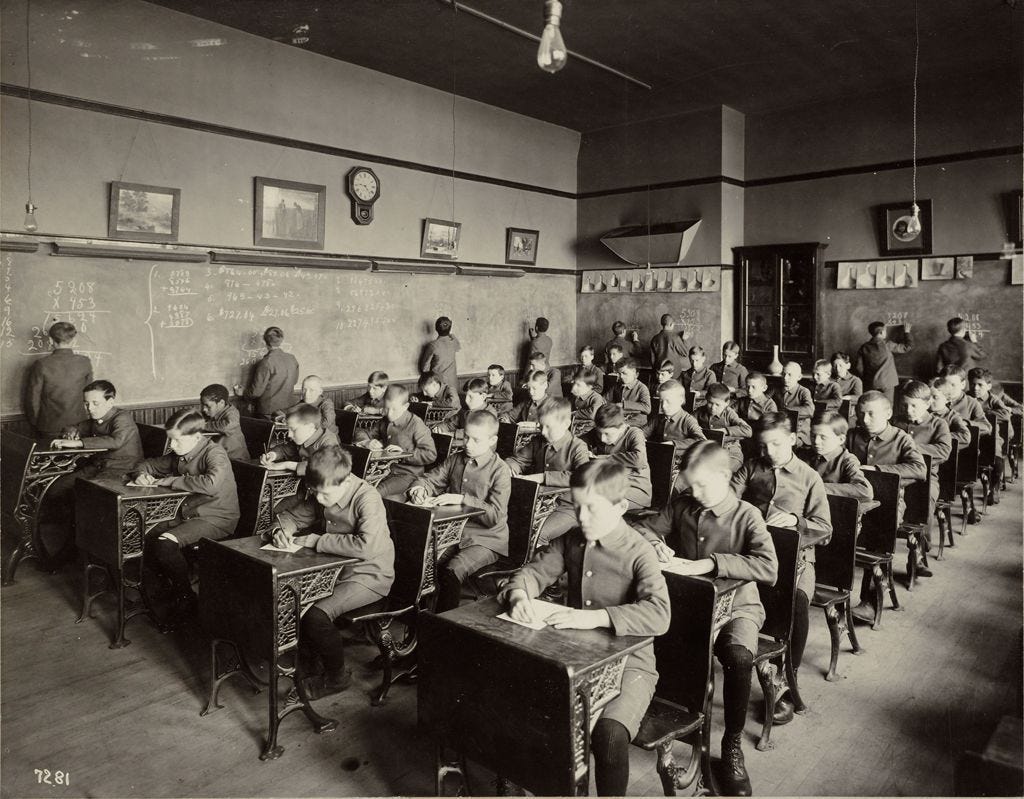
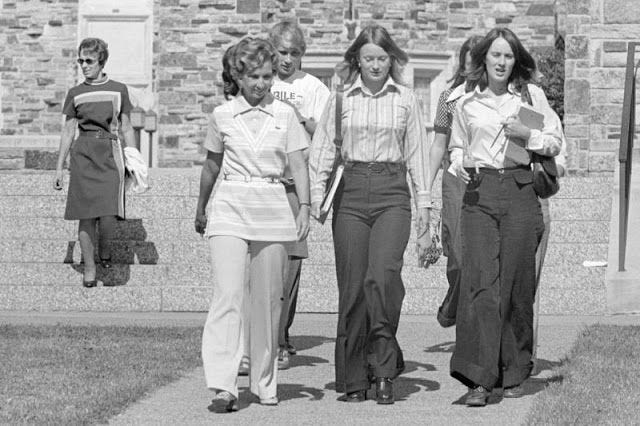
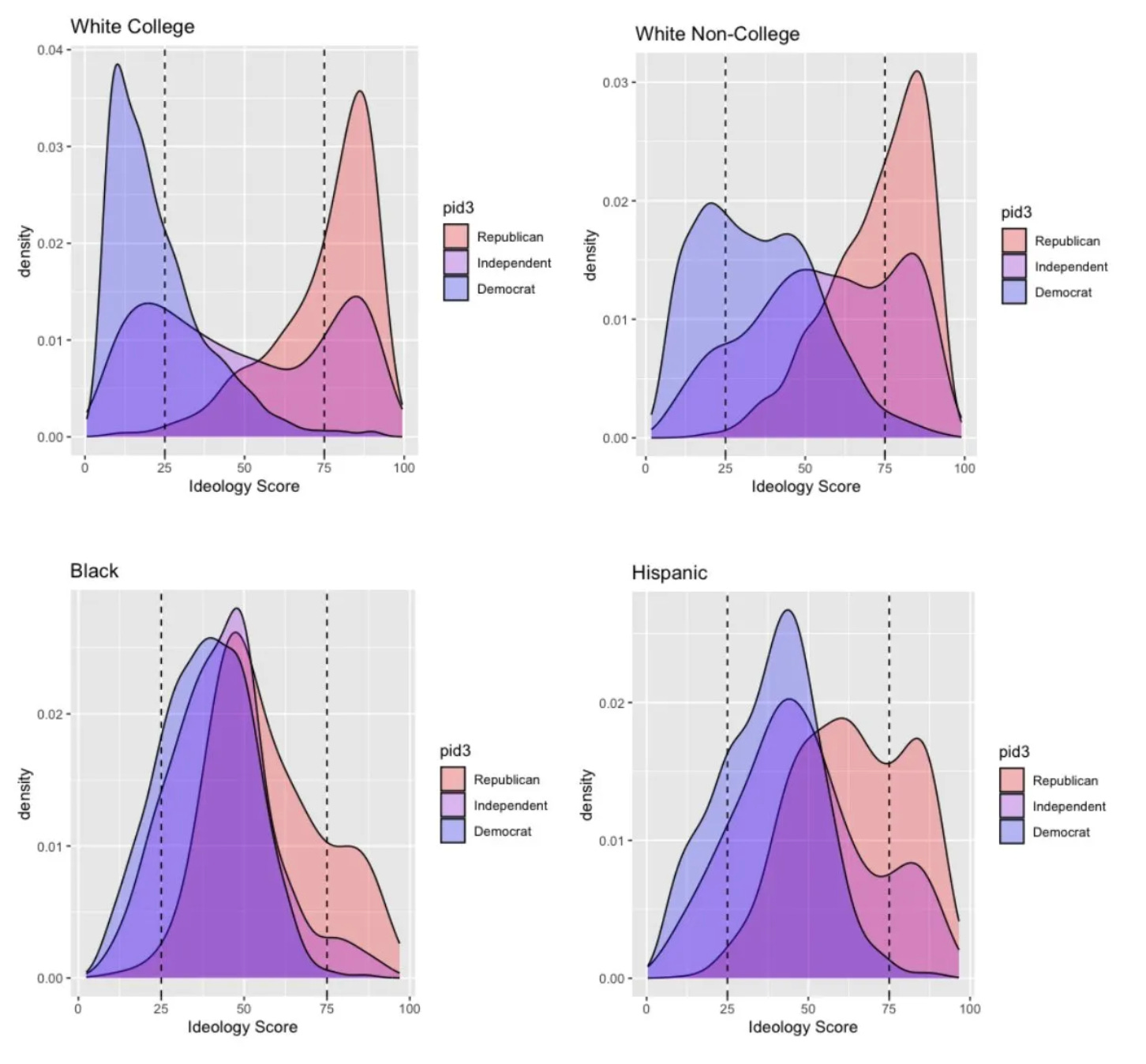


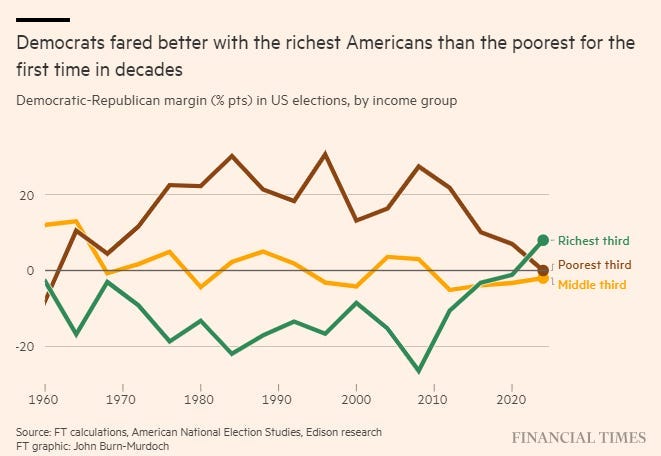
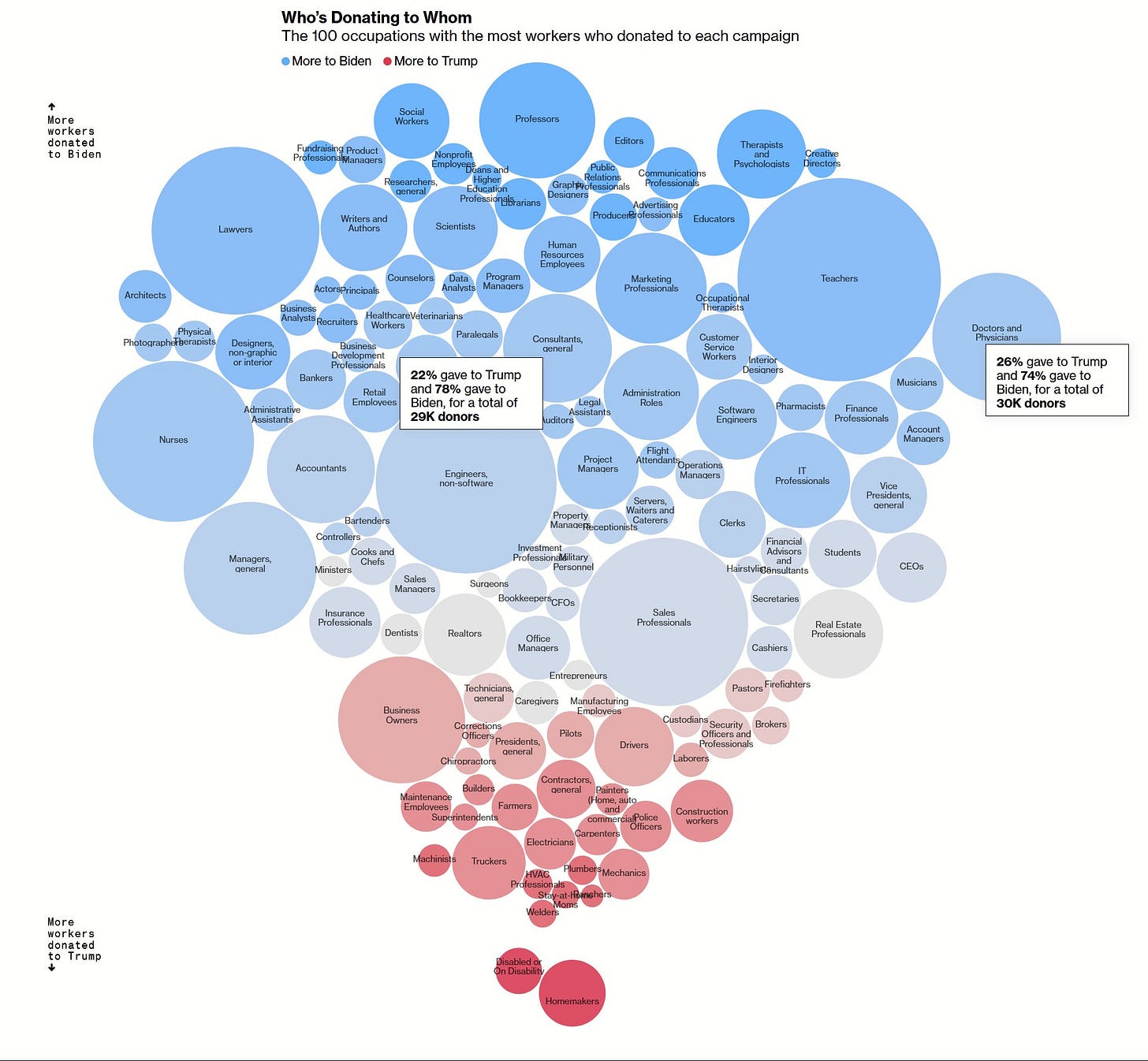
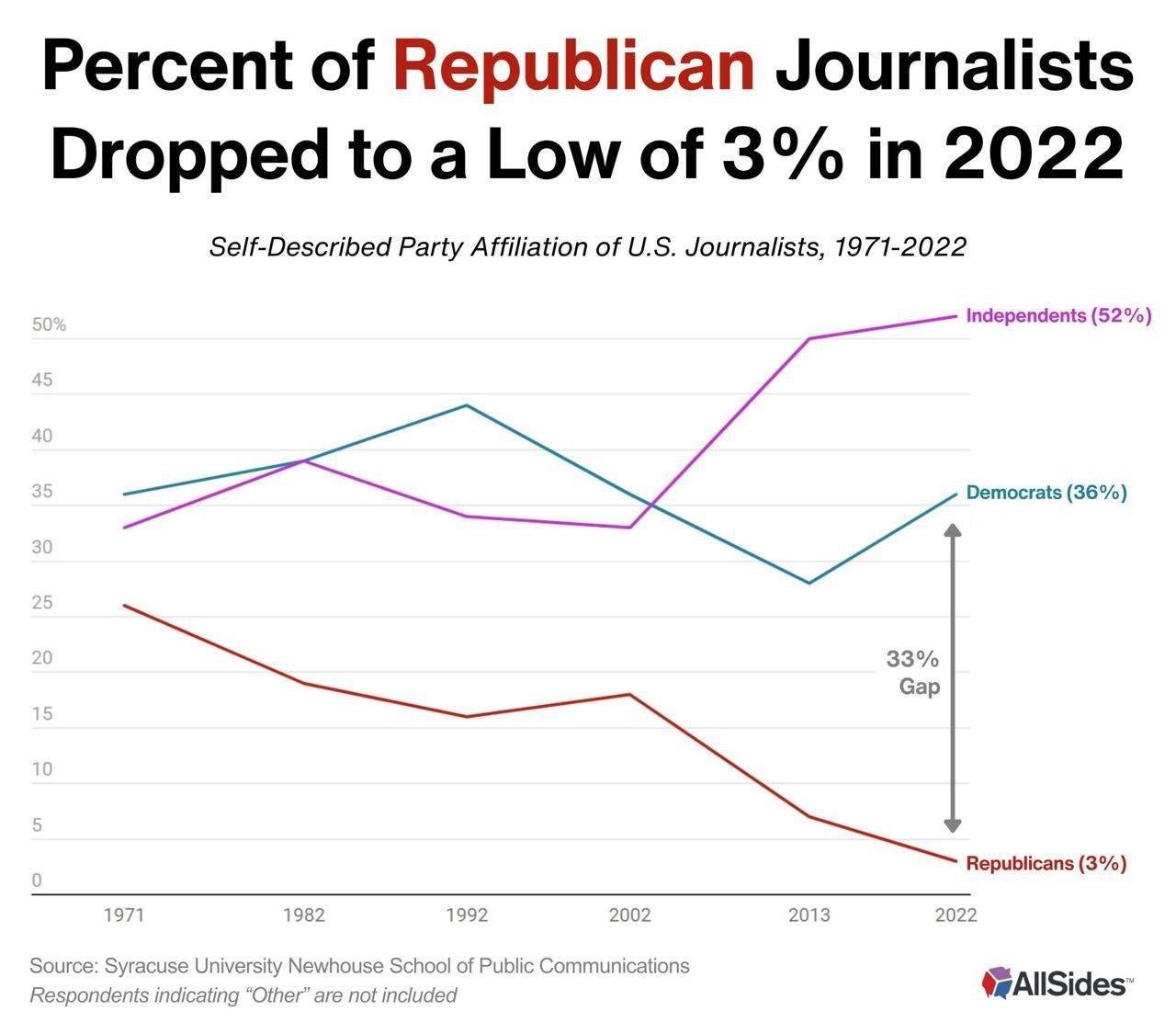



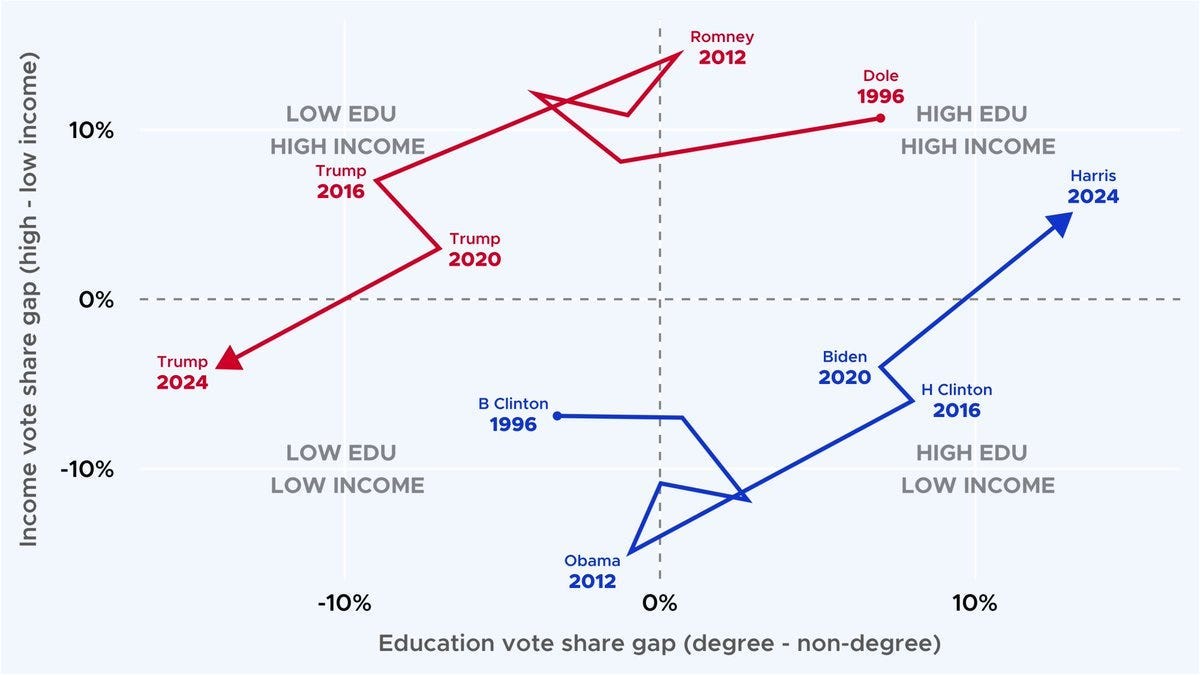

While the Woke may have demanded access to American institutions via hiring, firing, and promotions policies based on Diversity, Equity, and Inclusion, it was the Center-Left who invited them in. Without the passive (and sometimes active support of the Center-Left, the Woke would be powerless
This sums up my political cognitive dissonance right now.While i find more common ground with th views of center left people(like Steven Pinker or Sam Harris),and i don't like the conspiracy thinking of right wing media(about climate change/covid vaccines/GMO foods etc.),I dont trust a leftist government to push back against wokeness,those people invited it in the first place.
"From the American Revolution until the 1960s, the upper class of the United States was dominated by a relatively homogenous group. They consisted overwhelmingly of: Male"
The upper class was always half female and this is not a nitpick. What is true is that the male half of the Upper Class was politically and economically dominant. The female half was socially dominant.
That's not a small thing at all. The way people educate their children, speak, dress, eat and in general set parameter of acceptable and not acceptable are crucially important and women police all of these in Anglo-Protestant society.
I really have an issue with thinkers who do not recognize this and integrate it into their analyses.